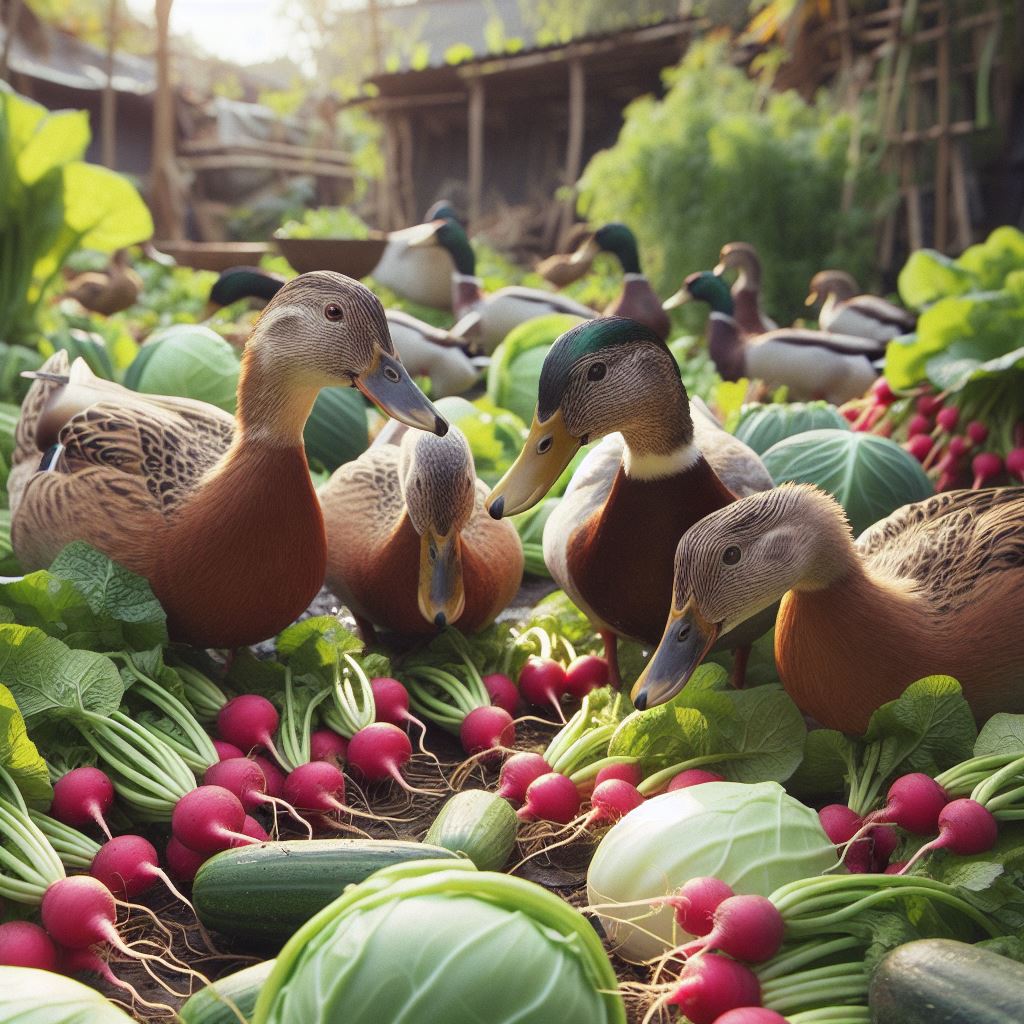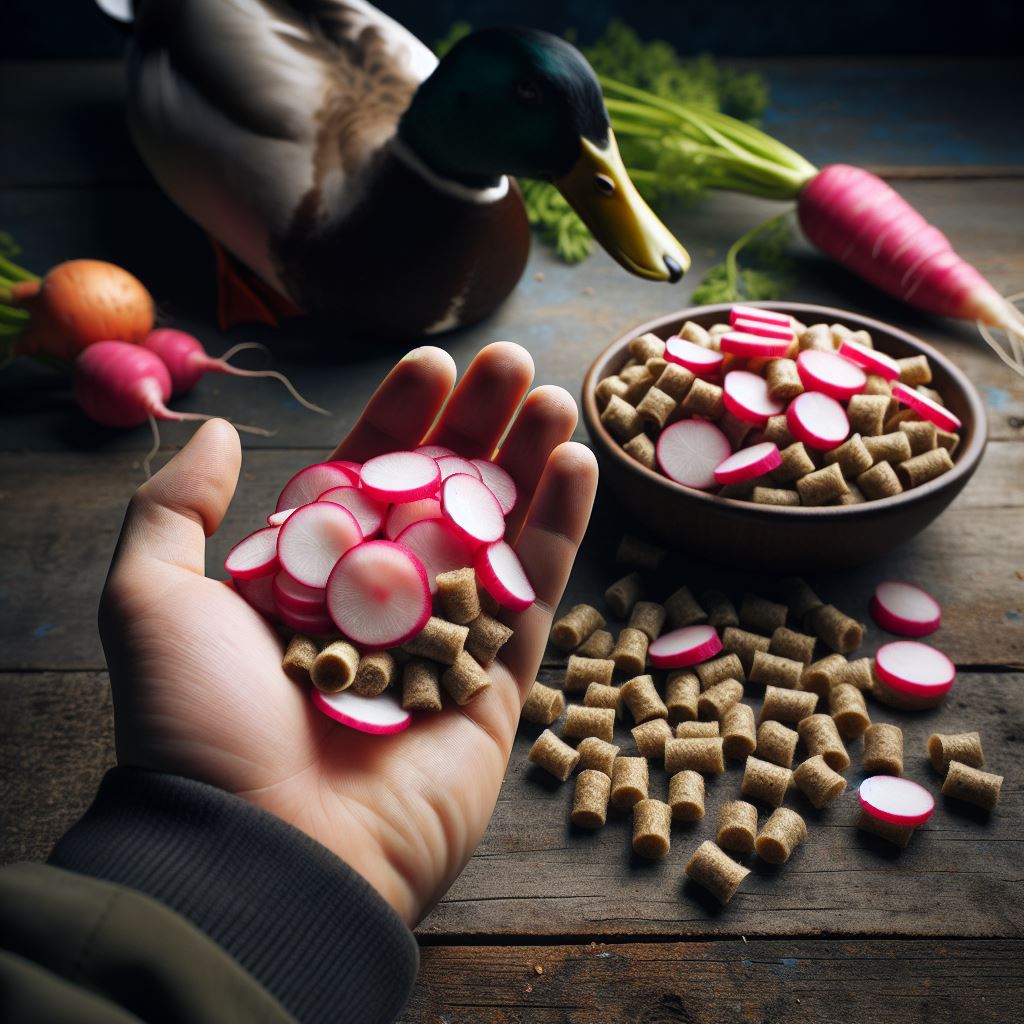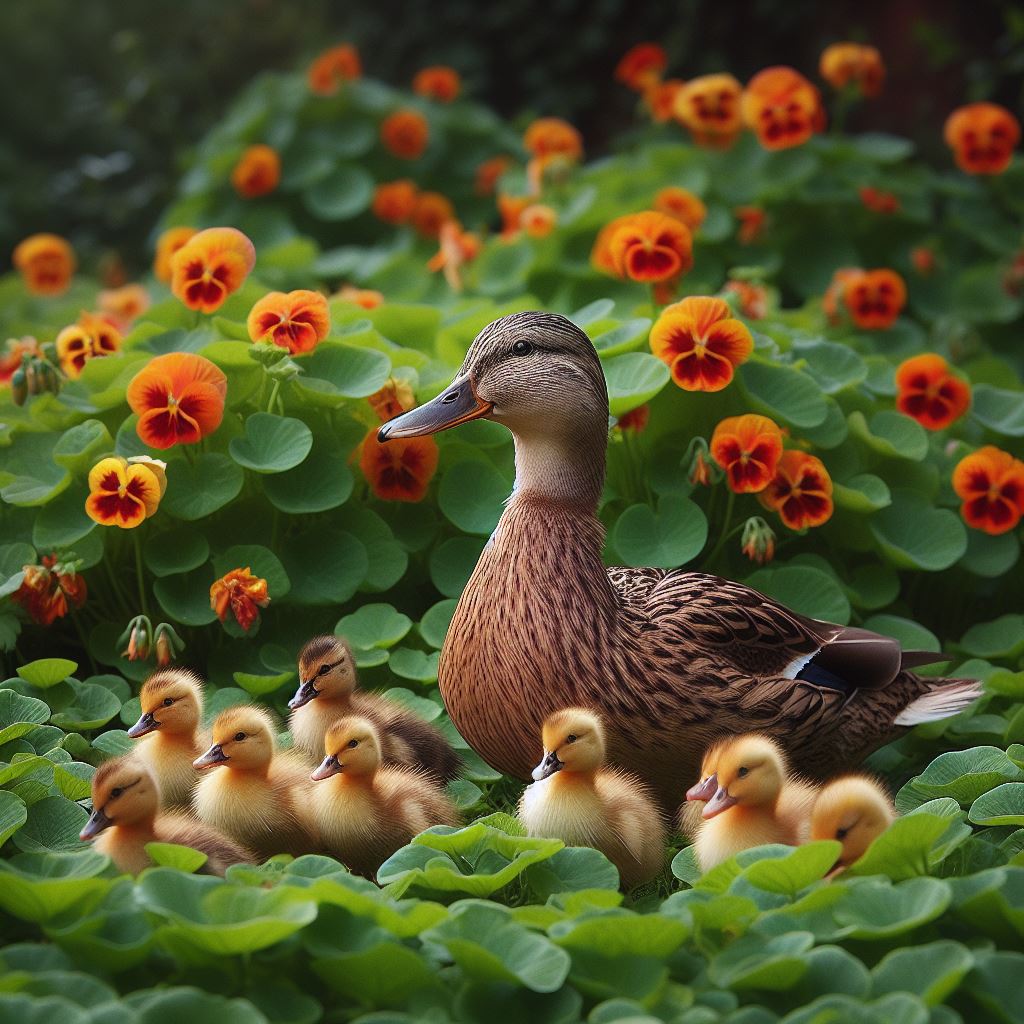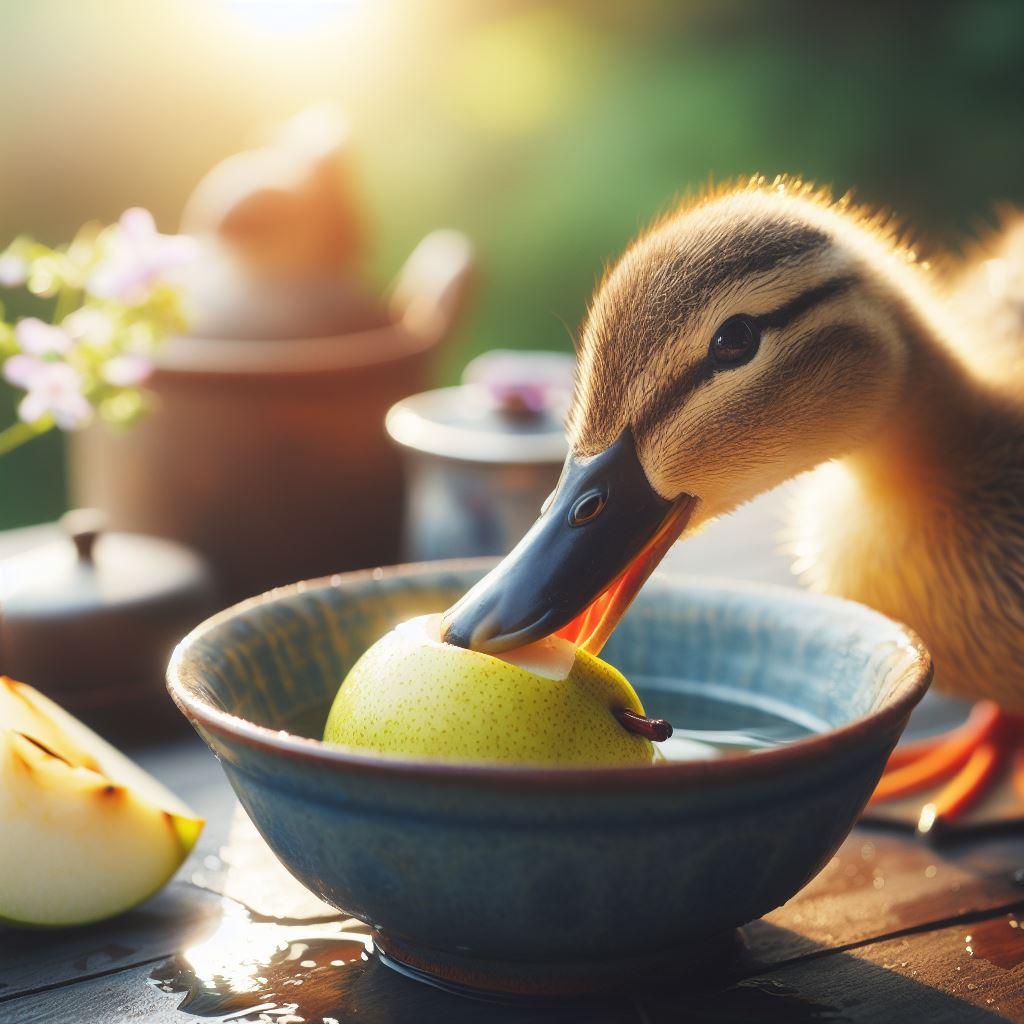Can Ducks Eat Radishes? What You Need To Know

Table of content:
Ducks encounter a wide variety of food sources as they forage through aquatic and terrestrial environments. Their diverse diet gives them access to many important vitamins, minerals, and nutrients. But can ducks eat radishes? As backyard duck keepers offer vegetable treats, this question arises.
Many species comprise the duck families Anatidae and Anseriformes. The most common ducks, including mallards, wood ducks, and mandarin ducks thrive near ponds, rivers, marshes, and flooded fields across North America.
Ducks employ specialized beaks and digestive systems to consume a varied diet, including:
- Aquatic plants
- Insects
- Fish
- Grains
- Seeds
Mallards and other dabbling ducks tip their heads underwater to nibble on vegetation and invertebrates. Diving ducks, like canvasbacks Hunt for food by diving below the surface.
Ducklings and female ducks require extra protein during breeding season to develop healthy eggs. Plants offer carbohydrates, and grit helps grind food in ducks’ muscular stomachs, called gizzards.
The Nutrition in Radishes
The most common garden radish belongs to the Brassicaceae family. Related to cabbage, kale, and mustard greens, radishes grow in a variety of shapes, sizes, and colors.
These crisp vegetables contain:
- Vitamin C: Supports immune function
- Potassium: Important for muscles and nerves
- B Vitamins
- Beta-carotene: An antioxidant that converts to vitamin A
The radish greens provide extra nutrition, including:
- Calcium
- Iron
- Vitamin K
 Can Ducks Safely Eat Radishes?
Can Ducks Safely Eat Radishes?
Ducks employ stiff lamellae along their bill to filter food. Serrated edges allow them to grasp live prey or vegetation. This adaptable beak gives them access to diverse food on land or in water.
A radish’s crunchy texture contrasts soft leaves and aquatic plants. This poses no issue for a duck’s enclosed bill and muscular gizzard. Ducks routinely swallow seeds, grains, insects, and even small stones to grind food.
So, can ducks eat radishes? Yes! Both the root and leafy greens provide safe, nutritious treats. Ducks encounter more dangerous items in the wild. Some considerations before offering radishes:
- Make sure wild-foraging ducks don’t carry bacteria inside.
- Chop large roots to prevent choking hazards.
- Introduce new treats slowly to avoid digestion issues.
- Rinse off pesticides if using store-bought vegetables.
Best Practices for Feeding Ducks Radishes
When including radishes in duck meals, follow these tips:
- Serve chopped roots and greens separately or mixed into grain-free poultry feed.
- Grow pesticide-free radishes in your garden for fresh duck treats.
- Offer a mixture of fruits, vegetables, and insects to mimic natural foraging.
- Introduce new foods slowly over two weeks.
- Feed radish-based treats 2-3 times per week alongside their main diet.
Monitor ducks when introducing radish snacks. Signs of digestive upset include:
- Listlessness
- Diarrhea
- Loss of appetite
- Feather plucking
If ducks show these behaviors, remove radishes and contact your vet. Healthy ducks should tolerate plain radishes well.
The Benefits of Feeding Radishes to Backyard Ducks
Radishes provide nutritional variety and foraging enrichment for backyard ducks. Benefits include:
Vitamins and Minerals
Radishes contain immune-boosting vitamin C, vitamin K for healthy blood clotting, and trace minerals like copper and zinc. The leafy greens offer calcium for egg production and bone strength.
Digestive Health
Crunchy radishes provide fiber, which healthy gut bacteria feed on. The gritty texture also aids digestion when eaten whole.
Antioxidant Protection
Beta-carotene and vitamin C are antioxidants that help prevent cell damage from free radicals. This supports overall health.
Foraging Fun
Scattering radishes across grass or along the pond’s edge stimulates natural foraging behaviors. This gives ducks exercise and enriches their environment.
Beyond nutrition, radishes give backyard ducks variation and stimulation.
How Do Wild Ducks Forage in Their Natural Habitat?
Dabbling ducks like mallards forage amongst aquatic vegetation in marshes, ponds, and flooded fields. Their wide, flat bill easily strains small seeds, snails, and arthropods from muddy water or soil. mallards sweep their bills back and forth, using taste sensors to detect food.
Diving ducks, like redheads and ruddy ducks, plunge below the surface in search of aquatic plants and insects. Their foraging dives may reach 20 feet deep!
During winter migrations, ducks rely on crops. Flocks may descend on fields of corn, wheat, barley, and oats left after fall harvest. Here, carbohydrate-rich grains fuel their long journeys.
In springtime, protein becomes crucial for egg production and duckling growth. Breeding ducks feast on insects, worms, snails and fresh greens. This diverse foraging provides all the nutrients ducks require across seasons.
Backyard ducks enjoy investigating new treats you offer. But wild ducks’ survival depends on their flexible foraging habits. Their ancestral diets serve as models for the fruits, veggies, grains and insects we supplement.
Can Pet Ducks Eat Radishes?
For pet ducks, a nutritious main diet ensures good health. Their digestive systems differ from chickens and other bird species. Appropriate foods include:
- Ducky grain blends
- Vegetable scraps
- Crickets
- Mealworms
- Chopped fresh fruits and veggies
Supplementing pellets with modest fresh treats provides enrichment. Chopped radishes can make up 5-10% of daily intake.
Follow proper introduction procedures when offering new treats. Gradually transition over 2 weeks while monitoring stool quality. Loose droppings signal overconsumption.
Always rinse grocery vegetables to remove pesticides before feeding. Intact leaves and roots also present choking dangers, so chop large pieces. Finally, rotate various fruits and veggies to give ducks diversity.
With proper precautions, radish roots and leaves provide pet ducks with great nutrition and fun foraging. The crunchy texture and spicy kick delight their eager palates!
Frequently Asked Questions About Feeding Radishes to Ducks
New duck owners have many questions about proper care. Here are answers to some common queries regarding radishes:
Can I feed radish greens to ducks?
Yes! The leafy green tops provide extra nutrition, including vitamin K. Chop the leafy portions to prevent choking.
Should radishes be cooked before feeding?
No need to cook plain radishes. Ducks can digest them raw. However, try steaming leftover radish parts after cooking to soften them.
How often can I offer radish snacks?
A few times per week, chopped into bite-size pieces. Scatter them as treats or mix them into grain-free feed.
Can too many radishes upset ducks’ digestion?
Overdoing new treats may cause loose droppings. Transition slowly over 14 days while monitoring stool quality. Reduce portions if diarrhea occurs.
Do radishes need to be organic for ducks?
Ducks won’t mind! But organic radishes have fewer pesticides, which is healthier for ducks and people. Thoroughly rinse any store-bought greens.
Instead of fleshy roots, can I feed ducks radish sprouts?
Sure! Bean sprouts are already duck favorites. Radish sprouts offer similar crisp texture and nutrition. Rinse thoroughly and chop before feeding.
Conclusion
Ducks employ amazing adaptations to forage on land and water. Their diverse diet provides balanced nutrition across seasons. As backyard duck keeping grows in popularity, owners want to share fresh, healthy treats.
Radishes deliver variety and nutrients. Introduce them slowly alongside a complete feed to allow ducks to thrive. Allow crunchy radishes and leafy greens to enhance ducks’ enrichment. Then sit back and enjoy their satisfied tail wags!
Welcome. I’m Adreena Shanum, the proud owner of this website, and I am incredibly passionate about animals, especially poultry. I founded adreenapets.com as a labor of love, stemming from my desire to share my knowledge and experiences with poultry enthusiasts worldwide.




